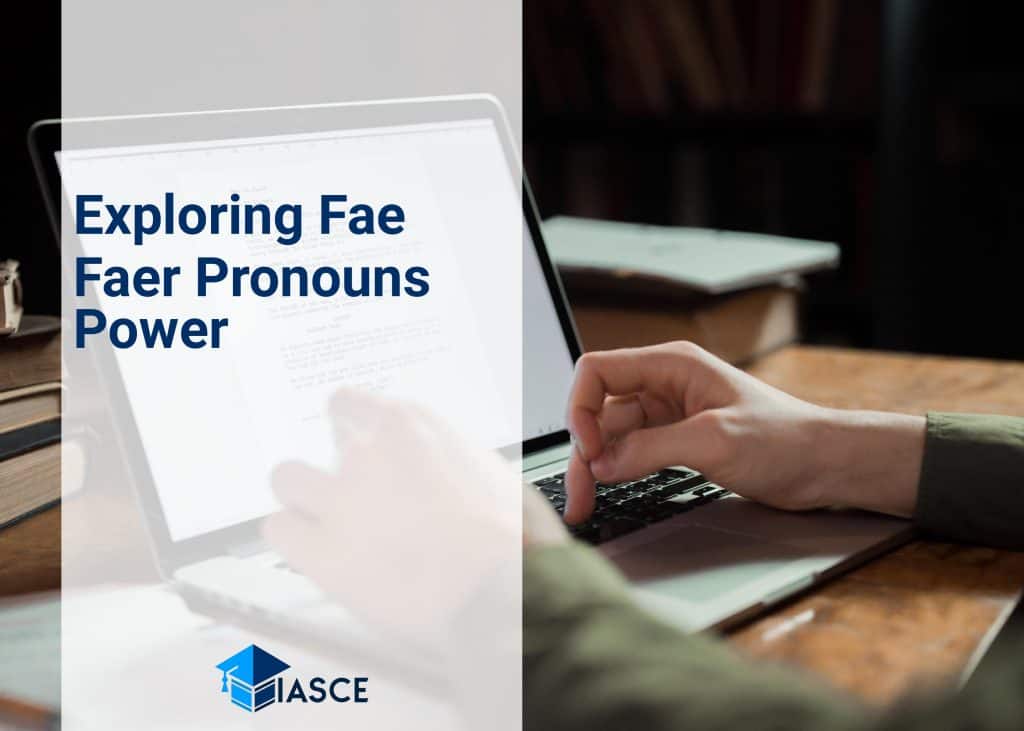Language continues to evolve, and so does the way we understand gender. Fae/faer pronouns are part of this linguistic evolution, acting as a testament to increasing diversity in our society. They’re not just words; they’re powerful tools that can help foster inclusivity and respect for all individuals, regardless of their gender identity.
I’ll be delving into the power these neopronouns hold: their origins, how they’re used, and why they matter. It’s a journey into language’s ability to shape perception, challenge norms, and ultimately create a more inclusive world. This article will serve as your guide in this exploration.
Remember – understanding fae/faer pronouns isn’t about being politically correct; it’s about showing empathy and respect towards others’ identities. So let’s dive right in and unlock the power of these important linguistic tools together!
Understanding the Fae/Faer Pronoun System
The world of language is ever-evolving, and I’ve found that a fascinating example of this dynamism lies in the adoption and usage of fae/faer pronouns. Let’s delve into these non-binary pronouns, their significance, and how to use them correctly.
Fae/faer pronouns belong to what’s known as neopronouns – a category of new (neo) pronouns that emerged as an inclusive way to address individuals who don’t identify within the traditional gender binary. These aren’t tied to any specific gender and offer a more comfortable option for folks who may not feel represented by he/him or she/her.
Now you might be wondering: How do I use these? Well, it’s simpler than you’d think. Consider this table:
| Traditional Pronoun Usage | Fae/Faer Pronoun Usage |
|---|---|
| He loves his dog | Fae loves faer dog |
| She lost her keys | Fae lost faer keys |
As shown above, ‘fae’ replaces ‘he/she’, while ‘faer’ takes the place of ‘his/her’.
One key thing to remember: respect is paramount when addressing others with their chosen pronouns. If someone prefers fae/faer, make sure you’re using them consistently and correctly. It may take some practice if you’re unfamiliar with neopronouns, but trust me – it’s worth it.
In terms of pronunciation, ‘fae’ sounds like the word “fay,” while ‘faer’ can be pronounced similar to “fair”. Offering guidance on pronunciation could help normalize discussions around neopronouns – which is incredibly important for fostering inclusivity.
No matter where we are on our linguistic journey, there’s always room for learning and growth. By understanding the fae/faer pronoun system better, we contribute towards creating a more welcoming space for all identities.
Linguistic Implications and Societal Acceptance of Fae/Faer Pronouns
Delving into the world of fae/faer pronouns, I find it’s a journey that highlights the power of language. These neopronouns, as they’re often referred to, aren’t just a trend. They’re an important part of how we express identity and respect individual autonomy.
Firstly, linguistically, introducing fae/faer into everyday conversations changes our perception of gendered language. It’s a step towards recognizing and validating non-binary identities in our language structure. Language isn’t static—it evolves as society changes—and the rise of these pronouns is proof.
By using fae/faer pronouns, we’re challenging traditional linguistic norms. We’re saying that he/she doesn’t encompass everyone’s experience. This shift can be uncomfortable for some but it also opens avenues for more inclusive communication.
On the other hand, societal acceptance is another beast to tackle. The use of neo-pronouns has been met with both admiration and criticism. Some people admire their role in dismantling binary assumptions while others see them as confusing or unnecessary.
Yet, societal acceptance is growing across various sectors:
- In academia: Schools are increasingly allowing students to specify preferred pronouns.
- Within workplaces: Many companies now include pronoun options in email signatures.
- On social media platforms: Platforms like Instagram have introduced features where users can display their chosen pronouns on profiles.
It’s clear that despite some resistance, there’s increased recognition that respecting someone’s self-identified pronoun isn’t just polite—it’s necessary for inclusivity.
At its core though, this debate speaks volumes about our relationship with language and identity—how we perceive ourselves and each other through words. As we navigate these waters together it’ll be fascinating to see how this shapes our collective understanding moving forward.
Conclusion: Empowering Communication Through Unconventional Pronouns
To encapsulate, the power of fae/faer pronouns really lies in their potential to foster more inclusive and empathetic communication. These unconventional pronouns challenge our traditional binary understanding of gender, opening up a new linguistic frontier. Fae/faer pronouns serve as a testament that language is an ever-evolving entity, constantly adapting to reflect societal changes.
And it’s not just about inclusivity. It’s also about empowerment. By choosing the pronoun that resonates with one’s identity, individuals are able to express themselves authentically and demand recognition for who they truly are. This shift towards personalized language validates diverse identities and experiences.
While adopting these novel pronouns might require some adjustment, I believe it’s a small effort compared to the significant impact it can have on fostering respect and understanding within our society. It’s about giving everyone the basic linguistic tools they need to feel seen and acknowledged in their daily interactions.
We must remember though that understanding comes from practice. So let me encourage you all to make use of these new additions to our linguistic repertoire whenever appropriate:
- In conversation: “Fae left faer umbrella at my place.”
- In written correspondence: “Please make sure fae receives this package.”
By incorporating these practices into our everyday communication, we’re not just respecting individual identities – we’re collectively reshaping societal norms around gender representation in language.
This exploration into unconventional pronouns has been enlightening for me as a linguist and I hope it has been for you too as curious readers! Language is powerful, evolving tool – let’s use it wisely.

